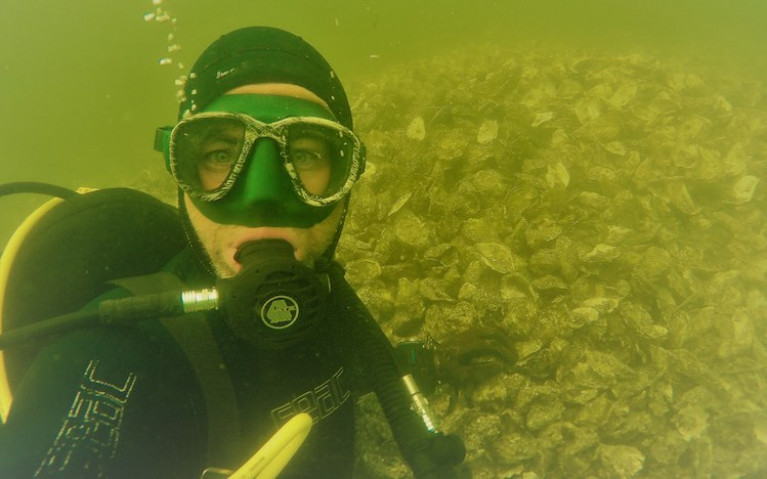“Good news everyone”, the natives have returned...” It’s not your average title to a scientific paper, but this one has reason to celebrate - hailing the return of native oysters to Belfast Lough after a century.
The paper by Bangor University researcher David Smyth and fellow scientists was published this month in the journal Regional Studies in Marine Science.
It documents how the European flat oyster Ostrea edulis has been confirmed in small numbers in Belfast Lough, and speculates on reasons why, such as shipping movements.
 One-year-old native oyster spat in south Galway Bay Photo: Cuan Beo project
One-year-old native oyster spat in south Galway Bay Photo: Cuan Beo project
Afloat reported on the unexpected return of the Belfast wild oysters last month here.
Marine Institute shellfish expert Oliver Tully spoke to Wavelengths about the significance of the find, and about how it is a reminder of the former abundance of native oysters along the east coast – an important food source along with Molly Malone’s “cockles and mussels”.
Heavy fishing, mainly by British vessels, rendered the oyster beds, which were particularly healthy off the Wicklow and north Wexford coasts, extinct. There were reports of tens of millions of oysters being exported into Britain in the mid 19th century.
 Native oyster on the sea bed in south Galway Photo: Cuan Beo project
Native oyster on the sea bed in south Galway Photo: Cuan Beo project
Tully says it is also a reminder of the importance of fisheries management – at a time of much uncertainty about same in the wake of Brexit.
He is involved in several native oyster restoration projects on the west coast, from Lough Swilly in Donegal down to Tralee Bay, and including the Cuan Beo project in south Galway bay.
 200 tonnes of cultch getting ready to deploy
200 tonnes of cultch getting ready to deploy
You can hear more about that project and the work of Cuan Beo, as explained by Tully, Noreen Cassidy and fisherman David Krause, below in the Afloat
podcast



























































